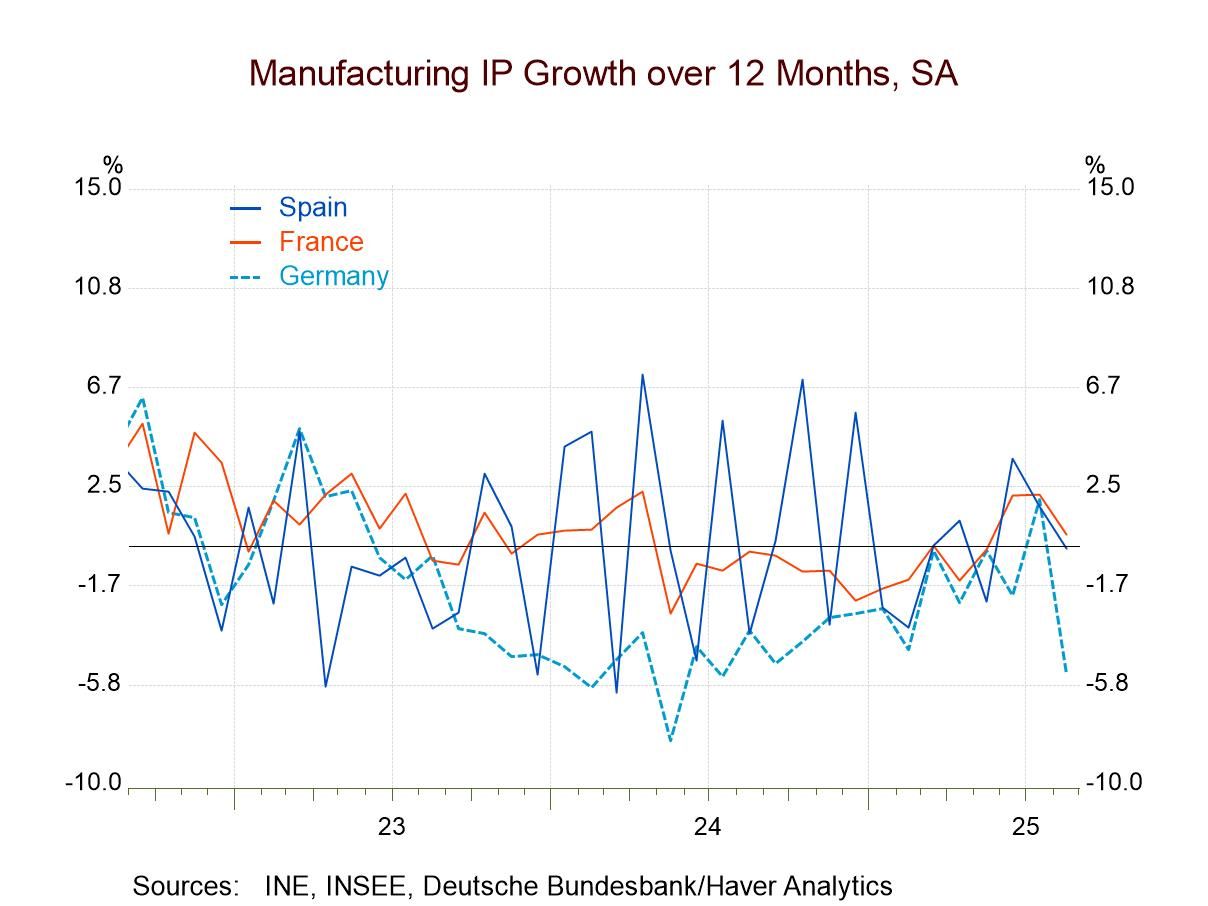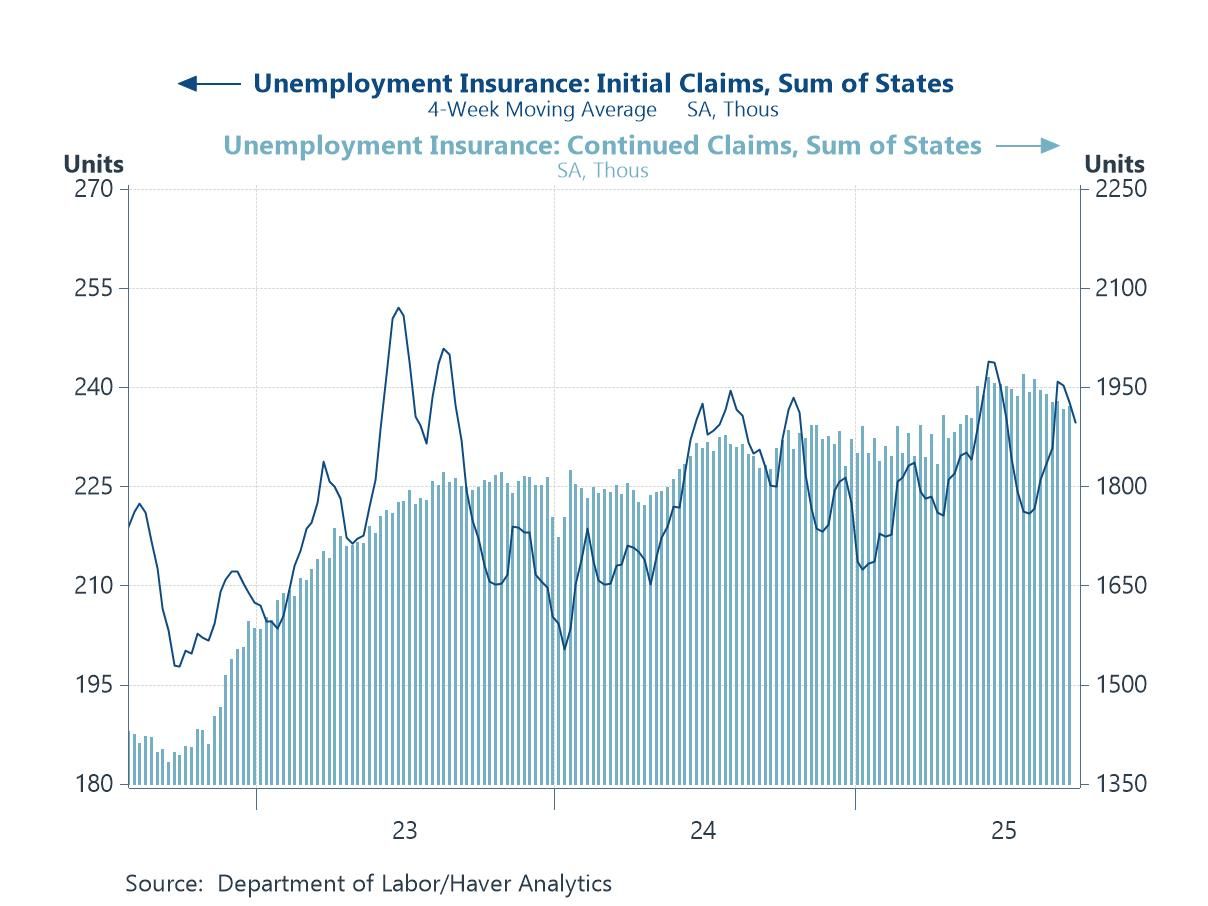 Global| Nov 03 2009
Global| Nov 03 2009U.S. Construction Spending Increases Moderately But Residential Recovery Firms
by:Tom Moeller
|in:Economy in Brief
Summary
Divergent trends within the construction sector haven't yet added up to any meaningful improvement in the total but it could be on the way. Reported yesterday, September construction spending rose 0.8% following steady monthly [...]
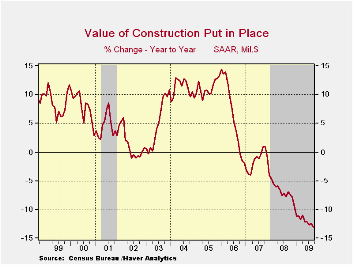
Divergent trends within the construction sector haven't yet added up to any meaningful improvement in the total but it could be on the way. Reported yesterday, September construction spending rose 0.8% following steady monthly declines during the last two years. Consensus estimates had been for yet another decline. Nevertheless, improvement in activity in the residential sector has picked up to a degree which may foreshadow improvement elsewhere.
Residential building activity increased firmly for the second consecutive month. The 3.9% m/m rise followed a similar gain in August and lifted the level of building activity to its highest since February. Single-family construction rose 2.4% (-35.0% y/y) for the fourth consecutive strong monthly increase. Spending on improvements also firmed by 7.2% (-12.5% y/y) in September after a 5.7% August increase. Offsetting the strength here has been a steady decline in multifamily building (-41.2% y/y). 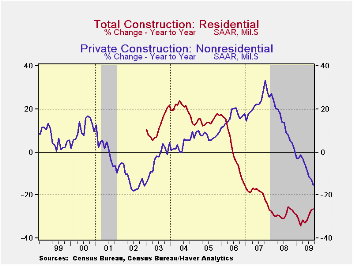
Poor corporate profitability and reduced economic activity generally continued to negatively affect nonresidential building activity. It fell 1.8% during September following similar declines during the prior three months. Over the four months combined, nonresidential outlays overall dropped 10.2%. Spending by the food & beverage industries declined 26.2% during those four months as it did in the automotive sector. Hotel & motel spending fell 19.0%; commercial & amusements also fell 19.3% and office building dropped 11.6%. Relatively firm was the four-month spending decline in the education sector which totaled 6.2%. Spending on health care structures was down 3.5% but building activity in the religious sector actually rose 1.3% during the four months.
Public construction overall has been firm, up 6.1% y/y. Spending recouped the August decline with a 1.3% increase. Building activity by state & local governments on power facilities rose 8.6% (32.0% y/y). The transportation area increased 2.7% (23.1% y/y). Public spending on health care facilities 3.4% (4.0% y/y and spending on highways & streets rose 1.0% (2.8% y/y).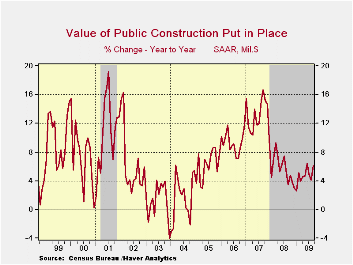
The construction put-in-place figures are available in Haver's USECON database.
Incentive Compensation, Risk Management, and Safety and Soundness is yesterday's speech by Federal Reserve Board Governor Daniel K. Tarullo an it can be found here here.
| Construction (%) | September | August | July | Y/Y | 2008 | 2007 | 2006 |
|---|---|---|---|---|---|---|---|
| Total | 0.8 | -0.1 | -1.2 | -13.0 | -6.9 | -1.6 | 6.3 |
| Private | 0.5 | 0.4 | -1.8 | -20.6 | -11.1 | -5.7 | 5.5 |
| Residential | 3.9 | 3.8 | 0.1 | -27.0 | -29.1 | -19.7 | 1.0 |
| Nonresidential | -1.8 | -1.8 | -3.0 | -15.4 | 13.2 | 23.1 | 16.2 |
| Public | 1.3 | -1.1 | 0.1 | 6.1 | 5.6 | 13.1 | 9.3 |
Tom Moeller
AuthorMore in Author Profile »Prior to joining Haver Analytics in 2000, Mr. Moeller worked as the Economist at Chancellor Capital Management from 1985 to 1999. There, he developed comprehensive economic forecasts and interpreted economic data for equity and fixed income portfolio managers. Also at Chancellor, Mr. Moeller worked as an equity analyst and was responsible for researching and rating companies in the economically sensitive automobile and housing industries for investment in Chancellor’s equity portfolio. Prior to joining Chancellor, Mr. Moeller was an Economist at Citibank from 1979 to 1984. He also analyzed pricing behavior in the metals industry for the Council on Wage and Price Stability in Washington, D.C. In 1999, Mr. Moeller received the award for most accurate forecast from the Forecasters' Club of New York. From 1990 to 1992 he was President of the New York Association for Business Economists. Mr. Moeller earned an M.B.A. in Finance from Fordham University, where he graduated in 1987. He holds a Bachelor of Arts in Economics from George Washington University.




